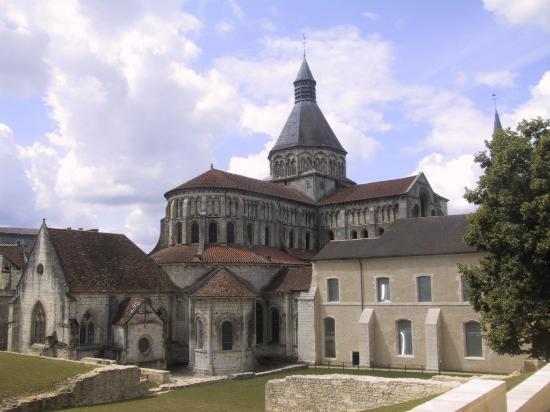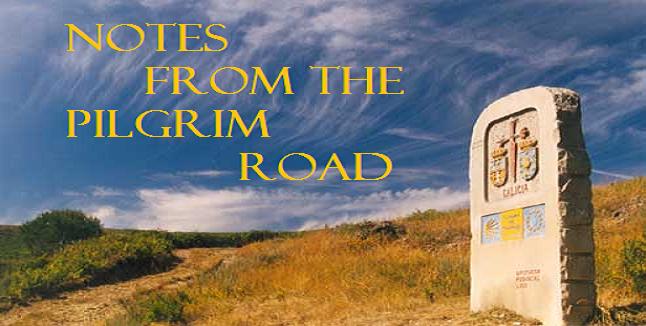What follows is my attempt to chronicle and recreate a few of experiences in Spain and France this summer for those interested. Focus primarily will rest on history and religion, and in particular the history that lives in the churches and castles that line the pilgrim roads to Santiago Compostella in Spain.
The Muslim conquest of the Holy Land in the Seventh and Eighth centuries caused the traditional pilgrimage to Jerusalem to become increasingly dangerous. As the Middle Ages unfolded, the journey across the Pyrenees and into Spain to the traditional burial place of St. James became the dominant pilgrimage route. The results were dramatic. The first great wave of Christian churches in the Middle Ages sprung up along the pilgrim roads - the age of Romanesque was born. Architecture, spirituality, culture and politics would all be dramatically affected by the great mass of Medieval Christians on the road to Compostella.
The Loire River

We spent a few of our last remaining days in the Burgundian city of La-
Charite-
Sur-Loire. A medieval city on the Loire River, it is charming, intimate and loaded with history. The center of the town is an 11
th C. Romanesque church that was under
Cluny and lay on the pilgrim road. The name of the town - the Charity- comes from the lodging and meals that the monks would give to the pilgrims. Joan of Arc also laid
siege to the walls (still standing) and the stone stairs the pilgrims would climb to get into town are also still there.

During World War II the citizens blew up the medieval bridge to halt the German advance. The Germans made it in anyway, so they were forced to rebuild it. However, after D-Day when the Germans were retreating, they blew the new bridge up to slow the allies. The current one was built in '46.

Our room, complete with stone walls and
original tile (500 years old) lay right behind the church.
 We spent a few of our last remaining days in the Burgundian city of La-Charite-Sur-Loire. A medieval city on the Loire River, it is charming, intimate and loaded with history. The center of the town is an 11th C. Romanesque church that was under Cluny and lay on the pilgrim road. The name of the town - the Charity- comes from the lodging and meals that the monks would give to the pilgrims. Joan of Arc also laid siege to the walls (still standing) and the stone stairs the pilgrims would climb to get into town are also still there.
We spent a few of our last remaining days in the Burgundian city of La-Charite-Sur-Loire. A medieval city on the Loire River, it is charming, intimate and loaded with history. The center of the town is an 11th C. Romanesque church that was under Cluny and lay on the pilgrim road. The name of the town - the Charity- comes from the lodging and meals that the monks would give to the pilgrims. Joan of Arc also laid siege to the walls (still standing) and the stone stairs the pilgrims would climb to get into town are also still there. During World War II the citizens blew up the medieval bridge to halt the German advance. The Germans made it in anyway, so they were forced to rebuild it. However, after D-Day when the Germans were retreating, they blew the new bridge up to slow the allies. The current one was built in '46.
During World War II the citizens blew up the medieval bridge to halt the German advance. The Germans made it in anyway, so they were forced to rebuild it. However, after D-Day when the Germans were retreating, they blew the new bridge up to slow the allies. The current one was built in '46. Our room, complete with stone walls and original tile (500 years old) lay right behind the church.
Our room, complete with stone walls and original tile (500 years old) lay right behind the church.

No comments:
Post a Comment